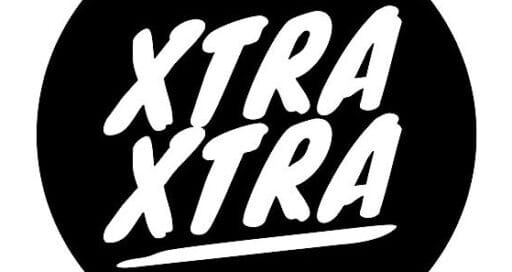The Fine Line Between Collecting and Hoarding: What’s the Difference?
In the vast realm of human behavior, there exists a peculiar and often misunderstood phenomenon: the fine line between collecting and hoarding. While on the surface these two concepts may seem worlds apart, a closer examination reveals that they share a common foundation rooted in the human psyche. The allure of amassing possessions, whether for personal pleasure or psychological fulfillment, can be a slippery slope that leads some individuals down the treacherous path of hoarding. This article will delve into the intricate workings of the human mind, exploring the mindset that distinguishes collectors from hoarders, while shedding light on the dramatic consequences that can arise from crossing that fine line.
To truly comprehend the mindset behind collecting and hoarding, one must first understand the fundamental differences between the two. Collecting, in its essence, is a hobpursued individuals who derive joy and satisfaction from amassing specific items of interest. These collections can range from stamps, coins, and vintage toys to more obscure objects such as antique doorknobs or even belly button lint. Collectors often invest time, effort, and financial resources into their pursuit, driven a passion for their chosen niche. They meticulously curate their collections, organizing and displaying their treasures with pride and a sense of accomplishment.
On the other hand, hoarding is a compulsive behavior characterized an overwhelming urge to accumulate and retain an excessive number of items, often of little to no value. Unlike collectors, hoarders are not driven a specific passion or interest. Instead, their behavior stems from deep-rooted psychological issues, such as anxiety, depression, or obsessive-compulsive disorder. Hoarders find it difficult to discard or part with possessions, attaching sentimental value to even the most mundane items. Their living spaces become crowded and chaotic, often rendering them uninhabitable and posing serious health and safety risks.
The fine line between collecting and hoarding lies in the mindset that drives these behaviors. Collectors are motivated a sense of purpose, fulfillment, and the desire to create a meaningful collection. They derive pleasure from the aesthetic appeal, historical significance, or rarity of the items they acquire. Collecting can provide a sense of identity and belonging, connecting individuals with like-minded enthusiasts who appreciate and share their passion. The mindset of a collector is one of intentionality, organization, and a healthy balance between the pursuit of their hoband other aspects of life.
In stark contrast, the mindset of a hoarder is one of compulsion and disorder. Hoarding is often a manifestation of deep-seated emotional issues, serving as a coping mechanism for unresolved trauma or a means of exerting control in a chaotic world. The mindset of a hoarder is one of fear, anxiety, and an overwhelming attachment to possessions. The accumulation of objects provides a false sense of security and comfort, shielding hoarders from the pain or emptiness they may feel. However, this mindset ultimately traps them in a cycle of isolation, shame, and declining mental and physical health.
The consequences of crossing the fine line between collecting and hoarding can be dramatic and far-reaching. For collectors, the pursuit of their hobcan bring immense joy and fulfillment. Their carefully curated collections often become a source of pride, allowing them to share their passion with others and contribute to a community of enthusiasts. However, collectors must be mindful of the potential pitfalls that can arise if their hobbecomes an obsession. The financial strain of acquiring rare or valuable items, the strain on personal relationships, and the risk of neglecting other aspects of life are all factors that collectors must navigate to ensure a healthy balance.

For hoarders, the consequences are far more severe. The dramatic toll that hoarding takes on an individual’s life is evident in the physical and emotional consequences they endure. The cluttered living spaces become breeding grounds for pests, mold, and unsanitary conditions, posing serious health risks. The isolation that often accompanies hoarding can lead to deteriorating mental health, exacerbating existing conditions such as depression and anxiety. Relationships with family and friends become strained, as hoarders struggle to maintain social connections amidst the chaos that surrounds them. In extreme cases, hoarding can result in eviction, loss of custody, or even death due to accidents or inability to access essential services.
The fine line between collecting and hoarding is a precarious one, and it is crucial to recognize the signs and seek help when necessary. For collectors, maintaining self-awareness and ensuring a healthy balance between their hoband other aspects of life is essential. Seeking support from like-minded individuals or joining collector communities can provide guidance and accountability. For hoarders, professional intervention is often necessary to address the underlying psychological issues driving their behavior. Therapists, organizers, and support groups can provide the necessary tools and support to break free from the cycle of hoarding and regain control of their lives.
In conclusion, the fine line between collecting and hoarding lies in the mindset that drives these behaviors. Collecting, driven passion and intentionality, brings joy and fulfillment to individuals’ lives. However, hoarding, rooted in compulsion and disorder, leads to isolation, deteriorating mental and physical health, and strained relationships. It is crucial to recognize the signs and seek help when necessary, ensuring a healthy balance and avoiding the dramatic consequences that can arise from crossing that fine line.
Podcast: Play in new window | Download (Duration: 16:59 — 15.6MB)
